If the universe is the infinite place, so vast that it exceeds every fervid fantasy and imaginations with its possibilities of knowledge, planet Earth is the “finite” place, and now the only place to live how human beings know how to, where to settle to build our own more or less in-formal social network.
Mudac in Lausanne, despite its recent unexpected management revolution with the non-confirmation of the newly hired Beatrice Leanza, secures its position as a dynamic place while still remaining quite marginal. Here, a new program of exhibitions, installations and performative and cultural events was inaugurated, offering the visitors of Plateforme 10 opportunities to engage with this theme through design as a project and program discipline, between creativity and method, art and science.
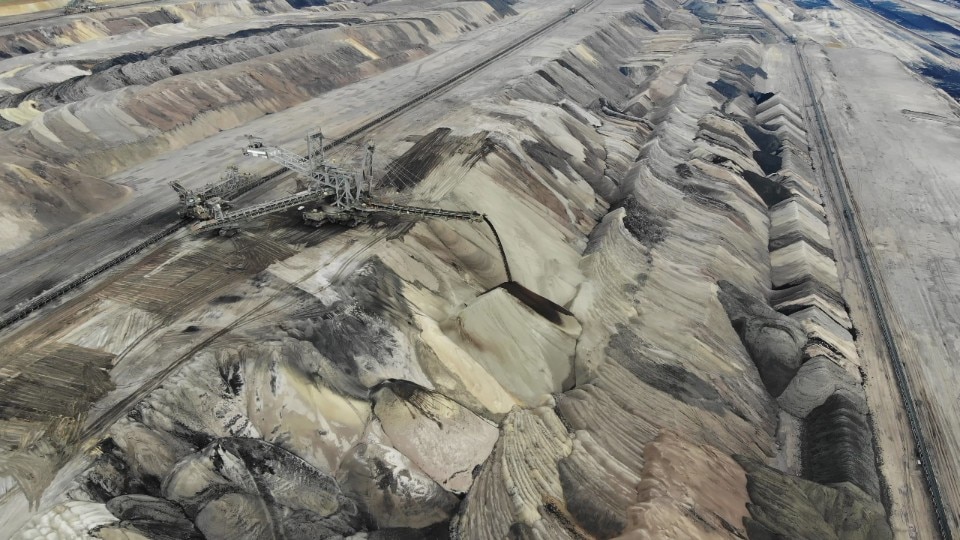
One theme, two exhibitions, three books, four external installations and numerous public programs will animate from now until January a rich collection of opportunities to find contact points between our planet in the cosmic space and design as a “complete” discipline that is as broad as possible.
The museum hosts two temporary and complementary exhibitions, standing almost at opposite poles given the premise of first and foremost wanting to observe the infinite, in a general journey that considers the “Cosmos” a place of investigation and inspiration for researchers, artists, and designers, while Earth is the focus of interest of an ideal return journey to rediscover what is really important for our species.
Cosmos. Design from here and beyond (which reopens in an updated version after its first opening in Belgium in 2021) is curated by cosmologist Thomas Hertog and Marie Pok, director of CID - Centre d’Innovation et de Design at Grand-Hornu (B), while “Earth – Designing our Planet” is curated by Jolanthe Kugler and Scott Longfellow from Mudac.
The two exhibitions are so complementary that there is almost no solution of continuity in the exhibition space, which alternates between candid spaces where objects and works “float” (the installation idea of Cosmos by Ghaith&Jad with plinths made of flexible supports, homage to Einstein’s theory of spatial deformation, is remarkable) and dark and sound spaces where luminous works and videos slow the pace of the exhibition, creating moments of involvement and deepening.
The turning point is halfway through, in the presence of a giant Blue Marble (the first photograph of the fully illuminated earth, 1972), where one exhibition passes the baton to the other. After ideally moving away, to the extreme outer limits of the dark universe, we return with “destination earth,” which we now can see with new, light-filled eyes. While Cosmos mainly shows us “objects,” with arbitrary references, Earth shows us “projects,” or systems of understanding, considering, and managing our planet that design allows us to measure, control and modify.
Cosmos
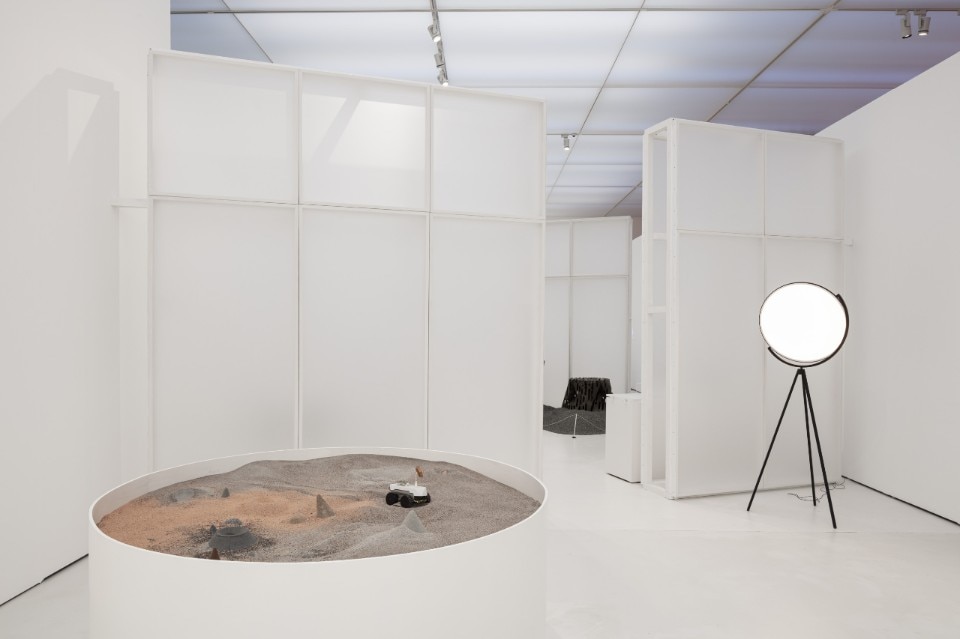
The word “cosmos,” we all know but worth reminding, is a term that comes from Greek and means order – and indirectly also harmony and therefore beauty – represents the ancient idea that the universe is governed by laws that very slowly human beings discover and unravel.
In the ancient activity of first observing and then exploring, the universe has always been an incredible container of wonders that have attracted and guided scientists and philosophers as much as artists and designers.
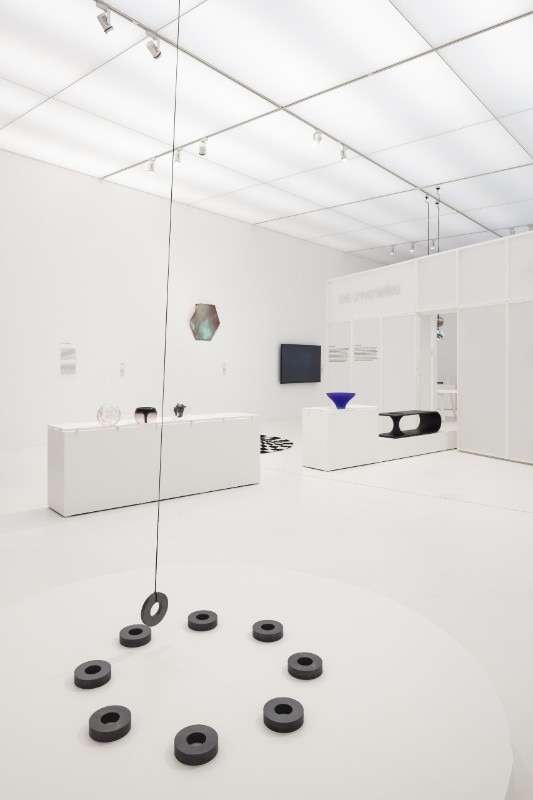
In a continuous alternation of pieces addressing the macro and the micro reality, like a self-perpetuating virtuous circle that demonstrates the connection of all things (entanglement is the new key word), there are sections addressing general themes such as the solar system, the moon, eclipses and meteorites, space excavations and even the exploration galaxies and investigation of the laws of the universe, ending with black holes by showcasing works, objects, furniture, lamps (as well as a few videos and installations) that more or less directly, and sometimes in a didactic and formalistic way, try to show how these subjects have inspired the world of applied art and design.
Earth
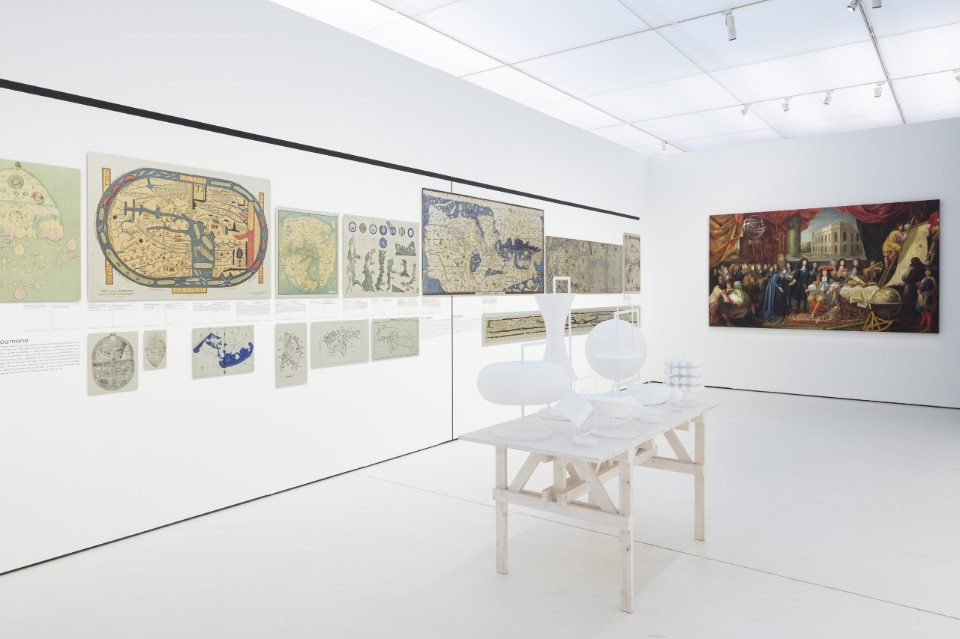
However, Earth is a completely different story, a tiny infinitesimal multicolored dot in the cosmos, but, at least for now, the only planet we can live on and therefore the most precious to all of us. Understanding design as a method that produces projects and relationships rather than objects or tools, focusing on the attitude of human beings toward the rest of the living and nonliving world, allows us to consider our planet a design project, as this exhibition suggests, which allows us to critically examine our contemporary Western position.
The opening is made up of a large gallery with numerous representations of the planet consisting in interesting and unique maps, planispheres, tables rich in detail that show how living beings have slowly understood the complexity of their planet according to sometimes geographical, other times political, or even religious intentions. After that, we are plunged into an evocative space, with an incredible and magnetic video by Joanie Lemercier (Slow Violence, 2019), in which we helplessly witness a deep and immense excavation destroying the Hambach Forest in Germany, and then into an amazing installation that allows anyone to invent a new Earth’s crust with all its orographic and three-dimensional details (Tellart, Terraform Table, 2018).
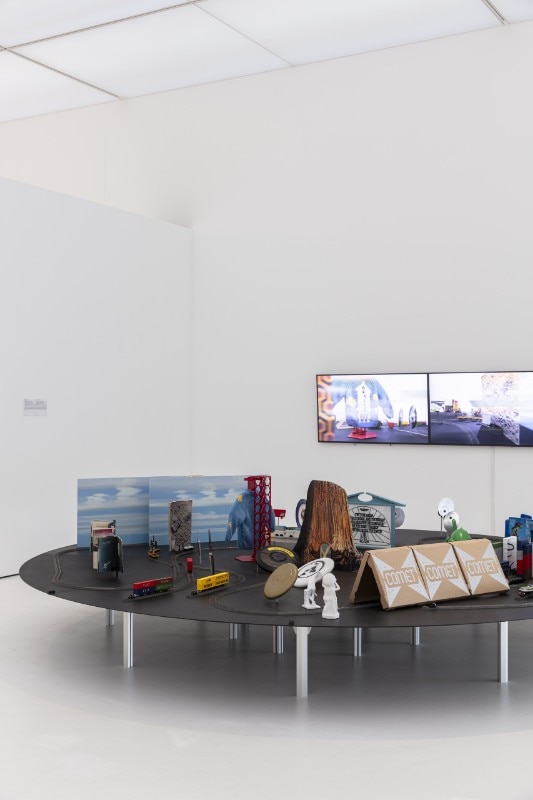
The exhibition goes by nimbly despite the density of the topic and continues with a section in which the planet is seen as an autonomous system, in which everything is circular and functions perfectly until the balance is altered. Here, we see the rare and as simple as it is complex work by Hans Haacke (Condensation Cube, 1963/68) and two highly original works by the up-and-coming Fragmentine studio (Displuvium, 2019 and G80, 2023). The exhibition concludes with a large space hosting various research offering new programmatic considerations about our planet, including a final and paradoxical installation made specifically for this event. The installation presents the results of interesting research on people who still think the earth is flat and the mechanisms behind it (Alexandra Midal, Antoine Fœglé, Emma Pflieger, Keep It Flat, 2023).
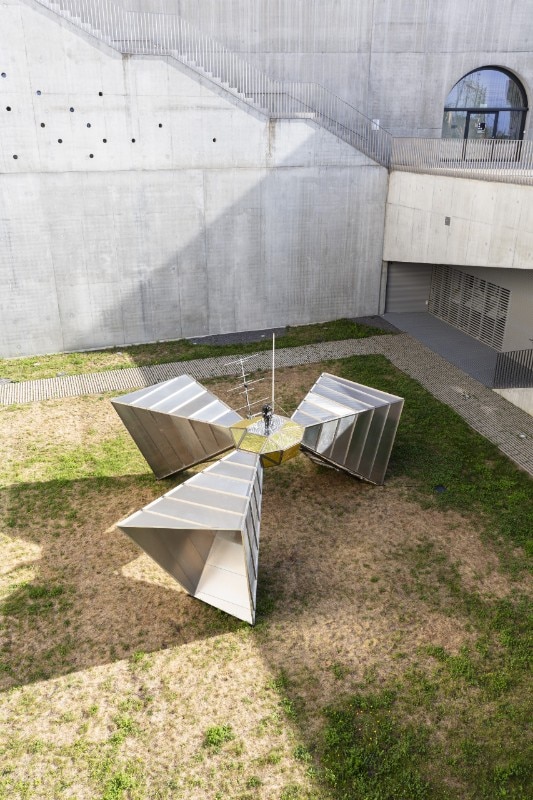
Lastly, to further broaden our horizons and stretch zeniths, outside the museum, in its subterranean garden there is a listening station for “zombie” satellites – Hystérésia, Stéfane Perraud & Aram Kebabdjian, 2022. These are numerous but invisible satellites which are not recovered after having accomplished their mission but continue to orbit, emitting signals that this station captures live and transforms into a sound performance. At the same time, two interesting installations animate the space under the arches of Plateforme 10: a video installation – New Weather TV, Simone Fehlinger, 2019 – in which the typical TV set for weather forecasts foreshadows a somewhat dystopian future in which everything on our planet is predictable, controllable and thus exploitable, and an audio installation – A Particular Score, AATB, 2019 – which is a kind of spatial carillon that senses cosmic rays from supernova explosions and plays sonic chimes that resonate in space and echo in our heads, filling it with new thoughts about the infinite cosmos and our precious, and more unique than rare, earth.
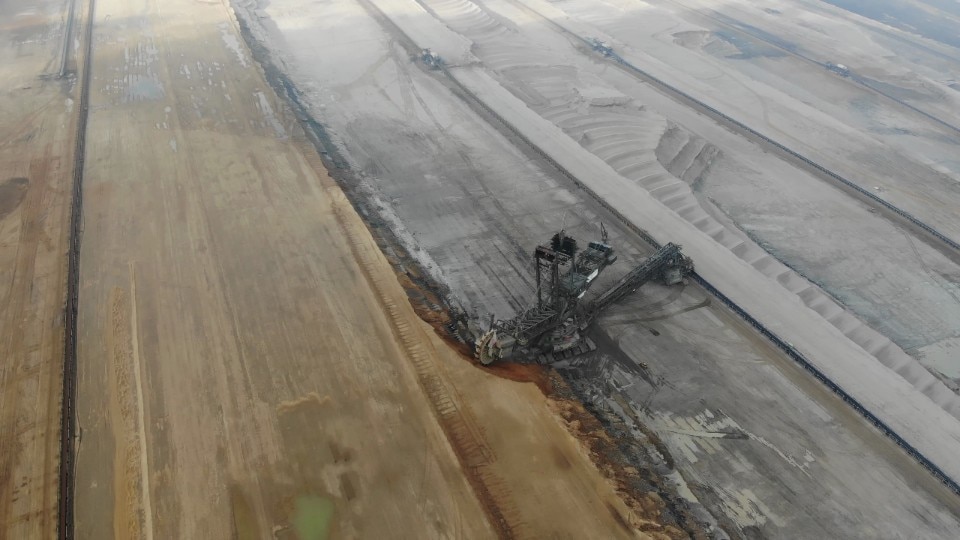
“Space is the place”
Mudac, Lausanne
From September 8th, 2023 to February 4th, 2024
Opening image: View of the exhibition “Earth. Designing our Planet”. Featured work: Archive of Impossible Objects: Globes, Dunne & Raby, 2019. Photo © Etienne Malapert
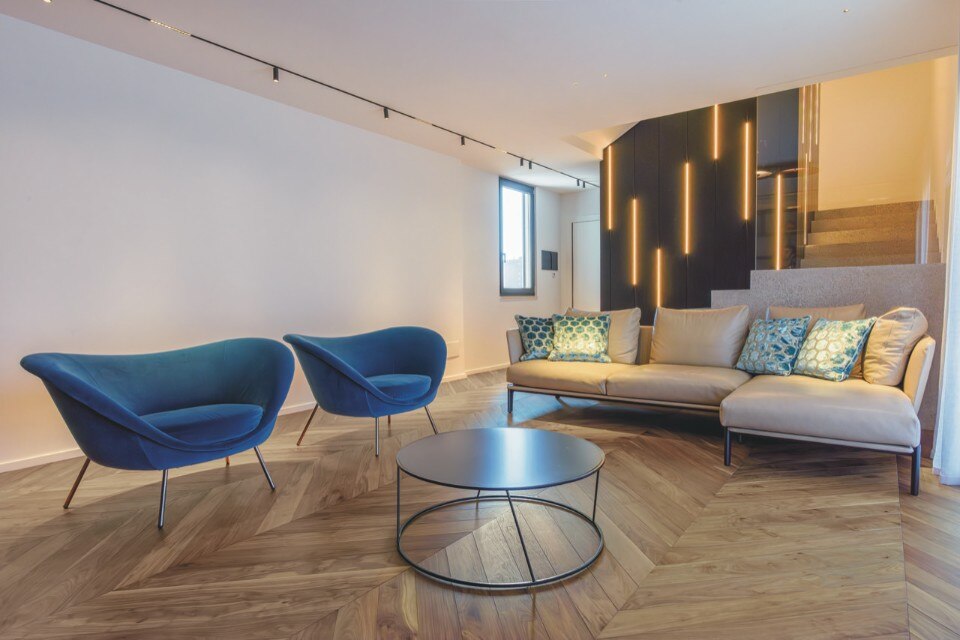
A home where wood is synonymous with innovation
Is there such a thing as a fine and enveloping parquet, warm and refined, but also easy to install and sustainable? The answer comes from Garbelotto.





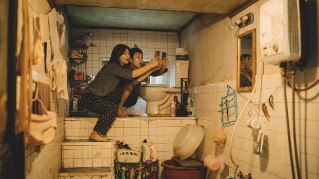





.jpg.foto.tbig.jpg)
